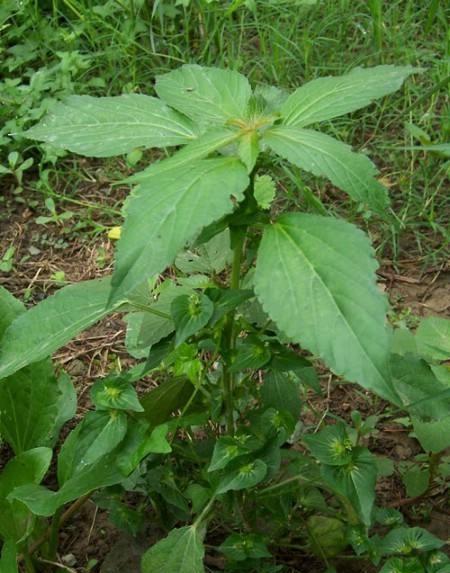#"Flashing Moment" Theme Essay Phase II # Amaranth, also known as Ghost, Wild Hemp Grass, Amaranth, Blacksmith First, etc., annual herb, broad-leaved crop. It is 30 to 60 cm tall and has an erect, multi-branched stem with longitudinal stripes and fine gray-white hairs. The leaves are alternate, membranous, diamond-ovate or ovate lanceolate, with serrated edges and hairy or nearly smooth on both sides. In summer, the leaf axillary has small flowers, male and female, and the male inflorescence is in the upper part, spike-shaped, reddish-brown; the whole herb is medicated, collected in summer and autumn, and used fresh or dried. It is distributed in all provinces in southern China and in the middle and lower reaches of the Yellow River. Born in fields, roadsides, gardens, wastelands and other places.
In recent years, with the emergence of resistance, in local areas, dominant weed groups have been formed, and the harm in peanut, soybean, corn and rice fields has become increasingly large. It has become the first major weed in autumn after purslane. Below I will share the prevention of amaranth according to each crop.

First, the corn field
Amaranth is relatively simple to remove in the corn field. At present, the more common formula in the market is nilfonyloxone + nicosulfuron + astoriadecin, and the anti-removal effect of amaranth is good.
Notes:
1. When the age of amaranth is relatively large, the dosage can be appropriately increased.
2. When there is dust on the stems and leaves of amaranth, it affects the anti-removal effect.
2. Peanut and soybean fields
Amaranth is more difficult to control in soybean fields than peanut fields, especially older amaranth.
1. Acetylene fluorosole
In peanut and soybean fields, the prevention of iron amaranth is inseparable from acetylofluorofen. Add 10% acetofluorofen 10 ml to the peanut soybean field herbicide, mix with 15 kg of water, spray evenly, and when the amaranth is old, the dosage can be appropriately increased.
2. Pine herbicides
Peanuts, soybean fields, anti-removal of iron amaranth, the anti-removal effect of herb pine is general, increase the amount of use, the price is high, do not increase the amount of use, the effect is general, so in the peanut, soybean field to prevent the removal of iron amaranth, it is not recommended to use the pine alone.
3. Meimidazole niacin
Peanut field to control the resistance of iron amaranth, memetazole niacin has a good effect on small age amaranth, with the increase of grass age of amaranth, the anti-removal effect of metamidazole niacin is general.
Special reminder: Meimidazole niacin is strictly forbidden to be used in soybean fields.
3. Rice paddies
Amaranth appears not only in dryland crops, but also in local areas of rice paddies.
The anti-effect and use method of acetylene fluorosole on amaranth are no longer described in detail. What needs to be reminded here is that acetylene fluorosole must be used after the three leaves of rice are one heart to avoid drug damage.
2. Chlorofluoropyroxyacetic acid
Chlorofluoropyroxyacetic acid is also good against the removal of iron amaranth, the above I have an article dedicated to the introduction of chlorofluoropyoxyacetic acid article, and acetocarboxylic fluoroacetin, are a variety of crops can be used universal herbicide.
4. Orchards and non-arable land
In orchards, non-arable land to prevent the removal of amaranth, there are a variety of recipe combinations:
1. Glyphosate + ethacylar fluorochloroeth
2. Glyphosate + chlorofluoropyroxyacetic acid
3. Ammonium glufolium + acetyle fluorosole
4. Phosphonium oxalate + chlorofluoropyroxyacetic acid
5. Dichosic fast + acetocarboxylic fluorochlorosole
6. Dichondrias + chlorofluoropyroxyacetic acid
Glyphosate is not recommended for orchard weeding, in orchards to control resistant amaranth, the best use recipe: enemy grass fast + acetylene fluorosole.
That's it for today. The above is purely personal opinion, if there is a supplement, welcome friends to leave a message, learn from each other, help more growers. If you have any questions, please leave a message, I will reply as soon as possible.
Pay attention to the three rural areas, care for the three rural areas, serve the three rural areas, and dedicate the three rural areas. Follow me to learn more about agricultural production techniques and get more agricultural information. Every day there is creation, every day there is an update...